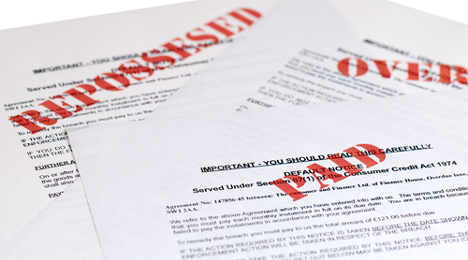Top 6 Debt-Collection Complaints Reported to CFPB

The Consumer Financial Protection Bureau recently released its semiannual report to Congress and contained within the nearly 200-page document are the top six debt-collection complaints the regulator received.
Here is the percentage breakdown of those six grievance categories consumers reported to the bureau between April 1 and Sept. 30. CFPB officials indicated they received approximately 86,900 debt-collection complaints during that six-month span.
— 36 percent: Continued attempts to collect debt not owed because debt was discharged in bankruptcy, debt resulted from identity theft, debt was paid or debt is not owed by the complaining consumer.
— 21 percent: Communication tactics such as frequent or repeated calls, called outside of 8 a.m. to 9 p.m., used obscene, profane or other abusive language, threatened to take legal action, called after sent written cease of communication notice.
—13 percent: Taking or threatening an illegal action such as threatened “to arrest me or take me to jail if I do not pay,” threatened to sue on debt that is too old to be litigated, suing without proper notification of a lawsuit, suing where consumer did not live or did not sign for the debt, attempted to/collected exempt funds, seized or attempted to seize property.
—13 percent: Disclosure verification of debt, such as did not receive notice of right to dispute, not enough information to verify debt, did not disclose communication was an attempt to collect a debt.
—10 percent: False statements or representation such as attempted to collect wrong amount, impersonated attorney, law enforcement or government official, indicated committing crime by not paying debt, indicated should not respond to lawsuit.
—8 percent: Improper contact or sharing of information, such as consumer was contacted me after asking not to be, contacted employer, contacted consumer instead of my attorney, or talked to a third party about debt.
“The most common type of debt collection complaint is about continued attempts to collect a debt that is not owed,” CFPB officials said in their report. “In many of these cases, the attempt to collect the debt is not itself the problem; rather, consumers argue that the calculation of the underlying debt is inaccurate or unfair.
“In other cases, the consumer’s complaint centers on the credit reporting of the debt,” they continued. “These complaints, which are often mirrored by credit reporting complaints submitted to the bureau, indicate that consumers frequently only learn about debt collection accounts when they check their credit reports.”
The bureau explained why verification of the debt and consumers’ questions about the underlying debt became a top grievance.
“In these complaints, consumers ask the debt collection company to provide them with validation or verification of the underlying debt,” the CFPB said. “Consumers are generally seeking documentation that they were the ones who signed the contract underlying the debt in question.
“Consumers, however, report that collectors do not provide them with information that the consumers believe they should provide,” the bureau added.
Finally, the bureau touched on complaints about communication tactics, particularly telephone collections.
“Consumers complain about telephone collections which are too frequent and which come at inconvenient times of the day,” CFPB officials said. “They also complain about debt collectors calling their place of employment or third parties. The most common telephone collection related complaint is when a consumer gets a call about another person’s debt.
“Sometimes the call is for someone with a similar name. More often, it appears the consumer’s phone number has mistakenly been attached to another person’s account,” they continued. “In most of these cases, it appears that consumers are submitting their complaint to the CFPB after repeated failed attempts to inform the company calling them that the debtor is not located at that number.”

 View The Latest Edition
View The Latest Edition

